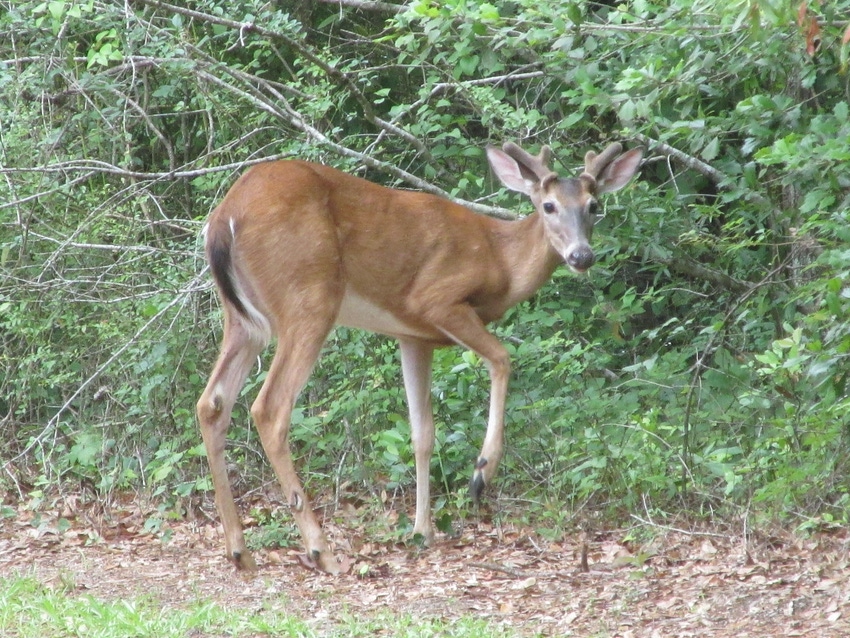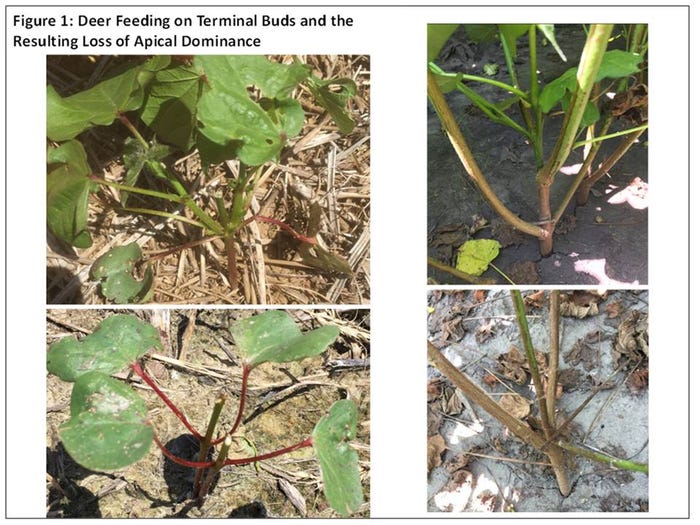April 12, 2018

In recent years, many growers have noticed an increasing incidence of deer feeding in young cotton. There are many theories as to why this may be occurring now relative to years prior.
The most common theories are the loss of aldicarb applied in-furrow for thrips and nematode control, major reductions in peanut acreage in the early to mid-2000s, and the resulting absence of preferred food sources during that time. The number of deer feeding complaints in cotton has risen sharply in the last five years; however, these cases are relatively isolated to fields that regularly encounter noticeably high numbers of deer and fields in close proximity to preferred bedding habitat.
Deer appear to feed on young cotton (less than five to eight true leaves) until other preferred food sources become available. Feeding preference is primarily on the terminal bud, thus causing a loss in apical dominance (Figure 1), which results in the majority of the harvestable bolls appearing on multiple vegetative branches.
Preliminary observations suggest that deer feeding can cause severe stand loss, delayed maturity, and yield reductions in surviving plants. It is important to evaluate and quantify the effects of deer feeding on young cotton so that replant decisions can be made in cases of significant stand loss or severe yield loss of surviving plants.
Editor’s note: To learn more about the extent of deer damage in North Carolina in recent years and how to better evaluate and make replanting decision, go to NC State Extension Cotton Team webpage.

About the Author(s)
You May Also Like




